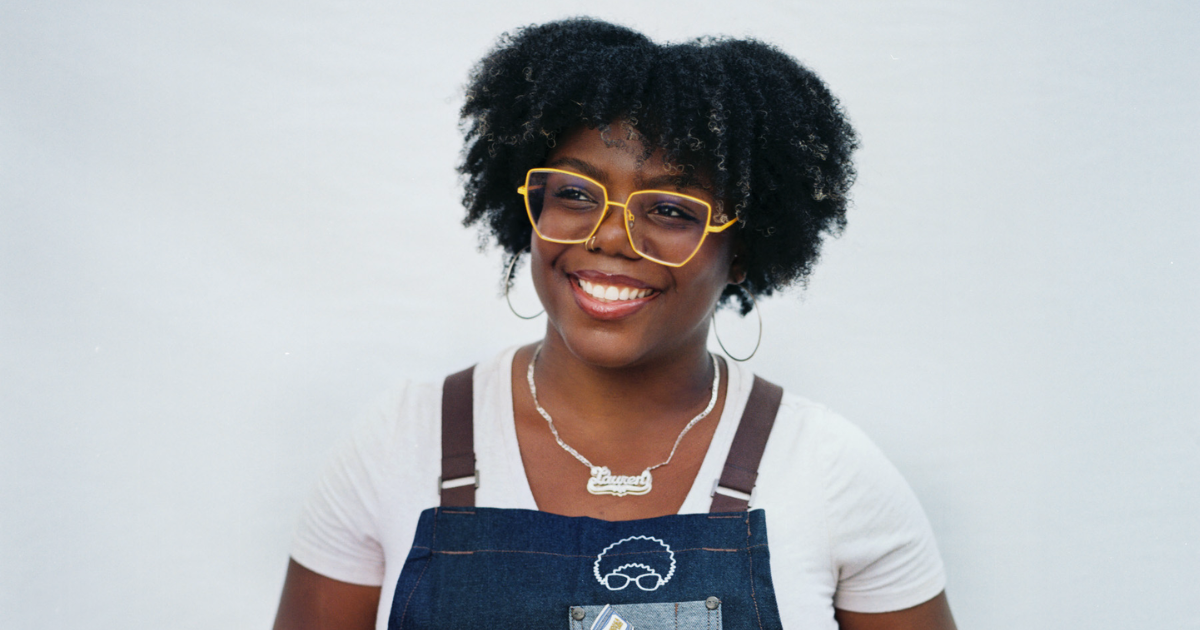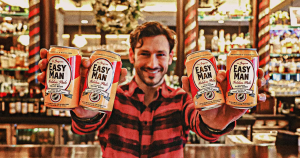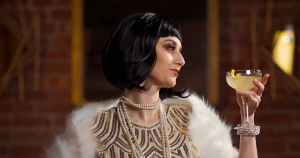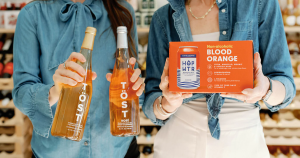LP O’Brien’s journey from nursing school to Drink Masters winner may seem unconventional. But what started as a part-time bartending job soon evolved into a full-fledged passion for hospitality, innovation, and education in the beverage industry. Now, as a leader in the non-alcoholic cocktail movement and a shareholder in Siponey, O’Brien is shaping the future of how we drink—whether with alcohol or without. In this interview, she shares insights on her career pivot, the challenges of reality TV, the evolution of non-alcoholic spirits, and what’s next for our category.
Dry Atlas: You actually started your career as a nurse. Then, of course, you gained recognition on Drink Masters. Can you talk about that journey? It’s a big shift!
LP O’Brien: I left the Bronx in 2010 to attend nursing school in D.C. while working part-time as a server at a bar. At the time, I was in a space rich with education on spirits, with an emphasis on ensuring we truly understood the stories we were sharing with guests. It was about crafting memorable, personalized experiences. That’s what initially attracted me to the industry.
Eventually, I found myself questioning my path. I was in nursing school but wondered if it was fulfilling me as much as hospitality potentially could. I made the decision to leave and knew that if I was going to pursue this career, I had to give it everything. So I studied, attended classes and seminars, traveled as much as I could, and worked at places that financially supported my learning.
Once I had a solid foundation in spirits, wine, and beer, I became more interested in hospitality and service—how to create the ideal guest experience. I worked at Kimpton’s Urbana, an Italian restaurant in D.C., for a few years, which was incredibly valuable. From there, I moved into bar management, running programs at two mom-and-pop shops before landing at Silver Lyan for my last bartending job.
At Silver Lyan, I started in a bartending role but was later offered a position as a research and development chef, which I loved. Silver Lyan is known for its innovative approach to cocktails, and I was at a stage in my career where I wanted to keep my head down, focus on learning, and explore the more nuanced aspects of drink-making—the ingredients and techniques behind the final product. That role gave me invaluable experience.
Then, of course, Drink Masters came along, which completely changed the trajectory of my career. It was the right opportunity at the right time.
DA: Tell us about Drink Masters. I’ve seen you say before that it was a challenging experience. I imagine it was highly competitive—and you’re suddenly thrust onto a global stage. How did that experience shape you, both as a mixologist and as a person?
LP: I definitely grew as a mixologist. I studied a lot, went to the library, and worked with pastry chefs and savory chefs—people with specialized expertise. I wanted to gain as much knowledge as possible because I knew that if I was going to compete on a global stage, I needed to showcase my skills at the highest level. I worked my butt off, and I’m really proud of that.
But I grew even more as a person. There were challenges. Unfortunately, I encountered some bullying and difficult personalities. And after the show ended, I had to navigate the reality of being in the public eye, open to criticism. That transition was tough. I don’t think I fully understood what I was stepping into when I signed up.
Ultimately, though, I learned a lot about boundaries and about myself. I built a community of people who aligned with my values and showed up for me, and I’m forever grateful for them. There were difficult moments, even periods of depression, but I put in the work to move forward. Today, I’m stronger, more self-assured, and much clearer about what truly matters to me. I have a family now, and I feel more aligned in both my professional and personal life. So, despite the challenges, I’m incredibly grateful for the experience.
DA: Let’s talk about non-alcoholic spirits. Given your decade-plus background in mixology, what were your first impressions when these options started hitting the market?
LP: It’s interesting because, for so long, we’ve been making non-alcoholic drinks without dedicated products. When I started in hospitality, there was always a focus on inclusivity, which included offering non-alcoholic options. So I wasn’t new to it.
When the category began expanding—especially post-COVID, when people became more conscious of their well-being—it made total sense. Consumer demand drives product development, and I was really impressed by the number of new options. I even worked with Seedlip as a brand ambassador for a time, which deepened my knowledge of the category.
What excites me most is that we’re living in a moment where this category is actively being built. I always encourage people to push for better products because consumer demand truly shapes what survives.
The category itself is complex. Non-alcoholic spirits don’t taste like their alcoholic counterparts—a non-alcoholic rum won’t mimic the exact profile of traditional rum. Instead, they offer different elements of complexity that can be integrated into cocktails. That’s why education is so important.
At the same time, non-alcoholic options shouldn’t only cater to people who want alcohol substitutes. Some consumers, like those in recovery, might not want something that tastes like alcohol at all. That’s why I advocate for incorporating traditional cultural beverages—like agua de jamaica or sorrel—into the mix. Those drinks have deep cultural roots and offer great non-alcoholic alternatives without resembling spirits.
DA: What about home bartenders? Do you have any simple advice for people looking to make great non-alcoholic cocktails at home?
LP: It’s even more challenging for them because success depends on understanding your base ingredients. You can’t just swap a non-alcoholic rum into a rum and coke and expect the same result. It’s about learning how these products are made and how best to use them.
That’s why the ready-to-drink (RTD) category is such a great entry point. It introduces consumers to non-alcoholic options in an accessible way. If you’re hosting an event, you can offer something delicious and inclusive without making it intimidating.
DA: It makes sense that you’re involved with an RTD brand, Siponey. How did you come to be a shareholder?
LP: After Drink Masters, I invested in the company because their values aligned with mine. Siponey is a B Corp that donates a percentage of revenue to environmentally focused initiatives, with an emphasis on saving the bees. Every SKU we create incorporates wildflower honey as a sweetener.
Right now, we’re focused on our non-alcoholic line, which includes four RTD cocktails inspired by classics: a Smash, a Punch, a Moscow Mule, and a Paloma. They’re designed to be enjoyed as is—just chill them and drink straight from the can—or mixed with your favorite spirit. We wanted to create something versatile, giving consumers the freedom to enjoy it however they like.
DA: I love that. It seems like optionality and convenience are key themes for today’s consumers, and Siponey is hitting both. Looking ahead, does your focus on non-alcoholic RTDs reflect any broader predictions for the future of drinking or mixology?
LP: Absolutely. Siponey prioritizes real ingredients and transparency, and I hope more brands do the same. Consumers are becoming more curious about what they’re drinking, and I encourage that.
As the category grows and becomes more standardized, consumers’ voices will shape its future. Companies have a responsibility to create quality products that genuinely serve the people consuming them. That’s always been my priority. I hope we stay curious and continue to ask questions to push the category forward.
This interview has been edited for length and clarity.






